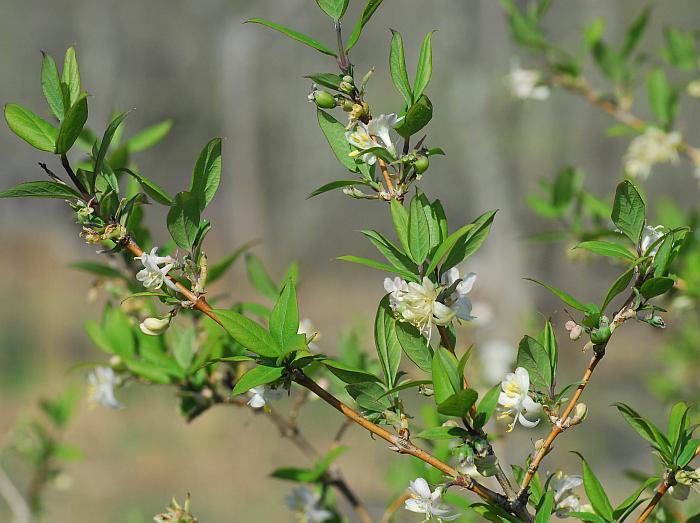Lonicera fragrantissima Lindl. & Paxton
Winter Honeysuckle

Introduced
CC = *
CW = 5
MOC = 2
© SRTurner
Lonicera fragrantissima Lindl. & PaxtonWinter Honeysuckle | |
 |
Introduced CC = * CW = 5 MOC = 2 |
© SRTurner |
|
Family - Caprifoliaceae Habit - Deciduous shrub, to 2 m. Stem - Twigs tan, becoming gray and often angled with age, usually with transverse stipular scars at nodes.
Leaves - Opposite, simple, short-petiolate. Blades broadly lanceolate to elliptic to ovate, glabrous, the margins entire.
Inflorescence - Axillary pedunculate fascicles typically with two flowers each.
Flowers - Zygomorphic, somewhat irregular, two-lipped, white, strongly fragrant.
Fruits - Berries, 8-10 mm, red or burgundy. Flowering - March - April. Habitat - Glade margins, upland prairies and woodlands. Origin - Native to China. Lookalikes - None. Other info. - This species was first collected in Missouri in 2014, and so far is known from only two locations in the state. Its U.S. distribution is widely scattered and sporadic, and largely confined to the southeastern portion of the country. So far it appears to be relatively uncommon (and rare in Missouri), despite allegations of invasiveness. It has been frequently cultivated, as the early spring flowers are pleasantly lemony-fragrant and attract bees and songbirds. Photographs taken at Washington State Park, Washington County, MO, 4-15-2019 (SRTurner). |